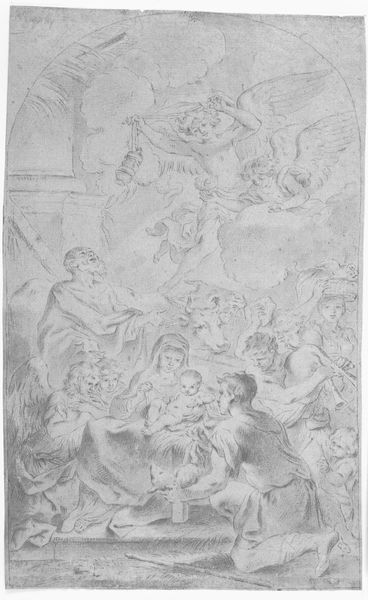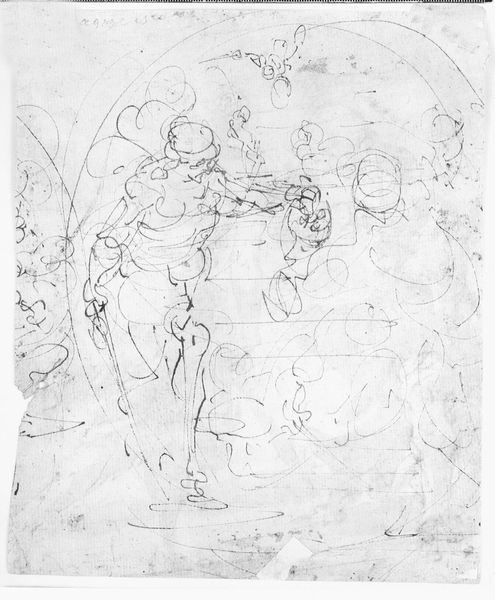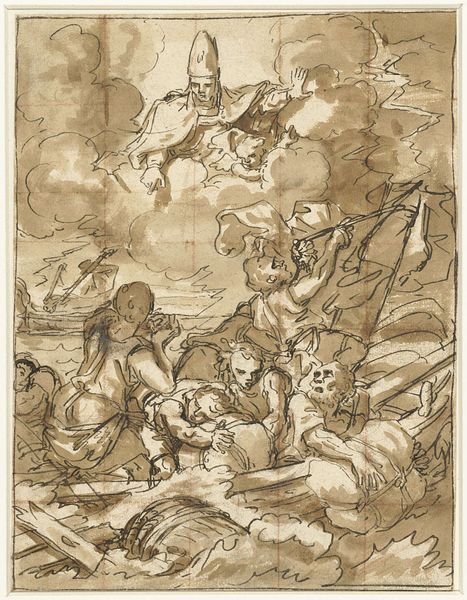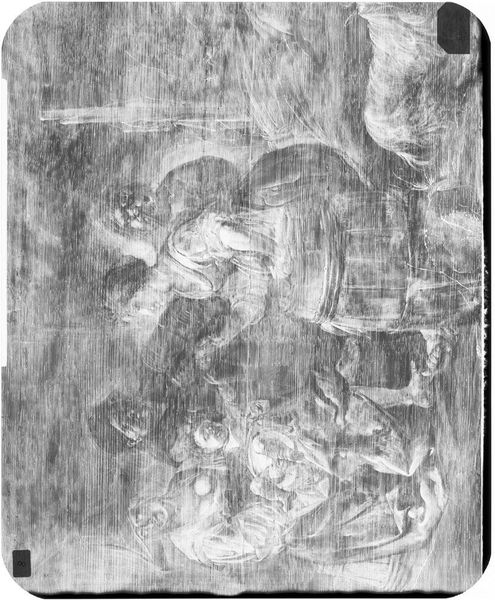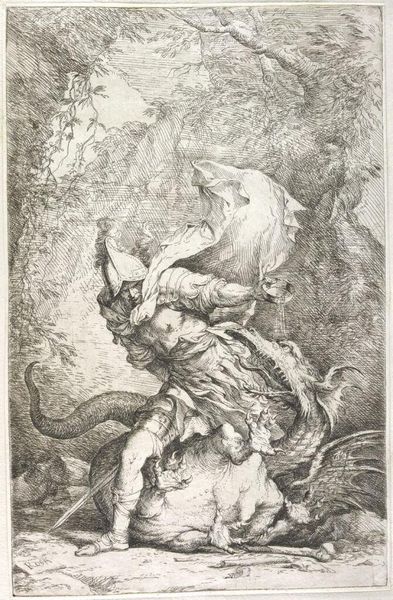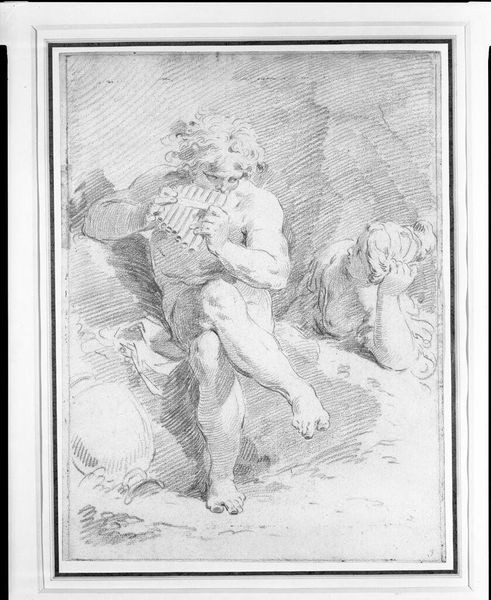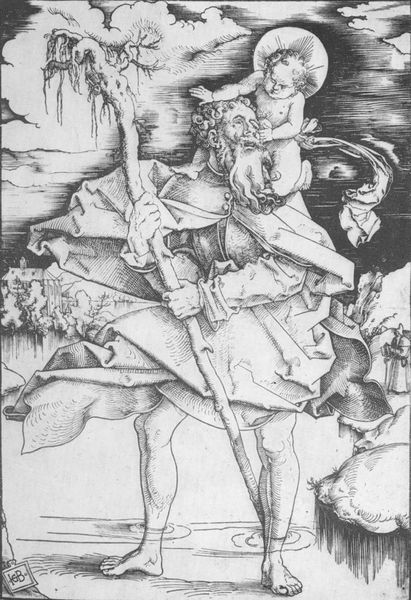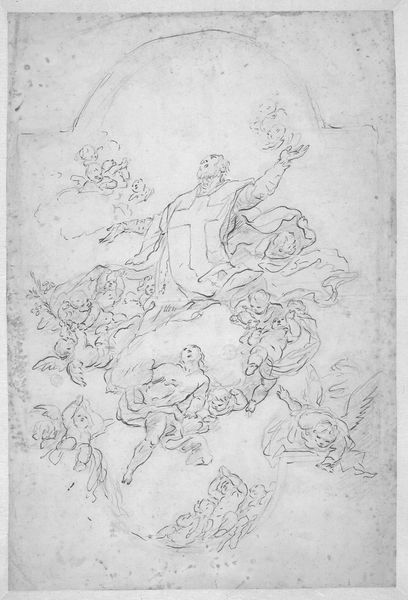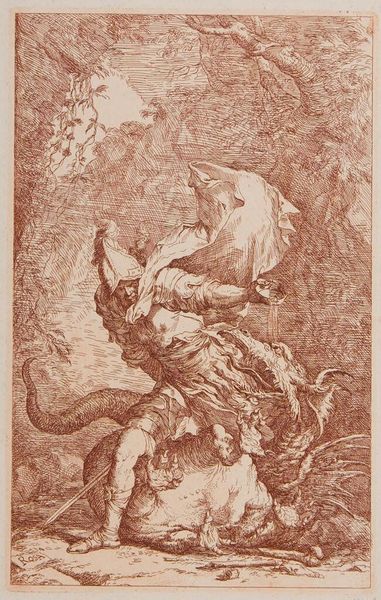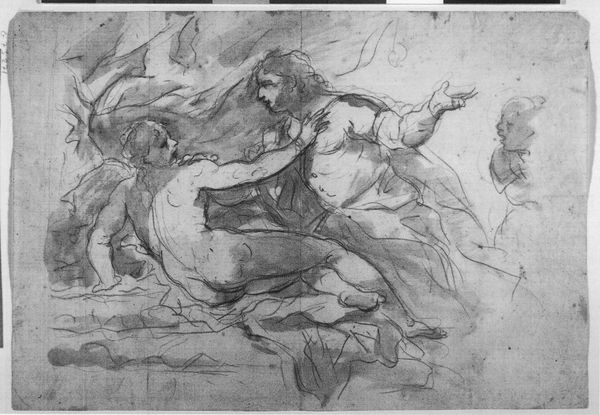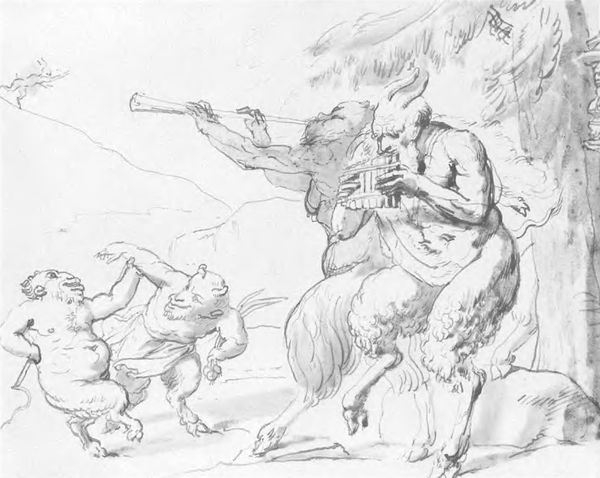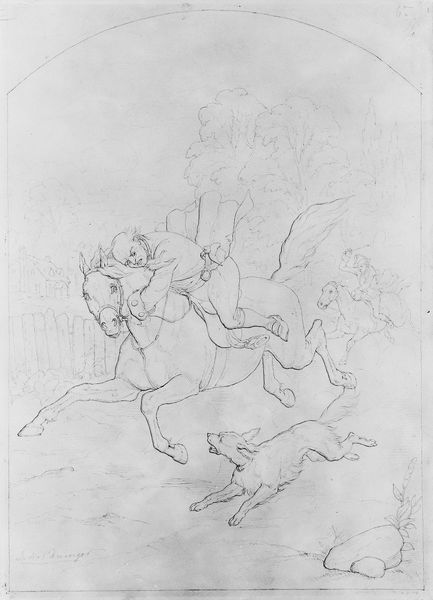
drawing, ink, pen
#
drawing
#
ink drawing
#
pen sketch
#
pencil sketch
#
figuration
#
11_renaissance
#
ink
#
pen
Dimensions: 177 mm (height) x 135 mm (width) (bladmaal)
Editor: We're looking at Valerio Castello's "Marriage of St Catherine," created sometime between 1624 and 1659, using pen and ink. It's just a quick sketch, but what strikes me is how the ink itself seems to define the figures’ forms, giving them a sense of fluidity. What stands out to you in this piece? Curator: What interests me is how Castello deploys the limited materials, pen and ink on paper, to invoke luxury and status associated with the Church. Consider the source of ink. Where did it come from? Who had access to it? The creation of a devotional image was part of the economy of belief and the production of sanctity itself. Editor: So you are saying that the physical materials play an important role in the symbolic reading of the artwork itself? Curator: Precisely. And think about the labor involved, the repetitive strokes, almost a form of meditative production that reflects both his belief, as well as the industry behind such an image that connects to the institution that commissions and preserves this type of image. The act of drawing itself becomes a form of devotion. The sketch doesn't just depict faith, it embodies the processes by which faith is made and maintained. It also moves beyond traditional views that may simply elevate such depictions as genius, divine, etcetera, which serves the higher ups. What we can view now and connect it to present-day production is accessibility, labor, means, materials, and messaging in all that is produced in various contexts. Editor: That's fascinating. I hadn’t thought about the process that way. It connects the artistic act directly to social structures. Curator: It pushes us to question, who is producing what? Under what conditions? It allows us to view art making from a social stance as opposed to a passive one. Editor: I guess that makes me consider more the broader context of Castello’s practice beyond just skill. Thanks! Curator: Indeed. Thinking materially about Castello’s work helps us grasp the deeper dynamics of artistic creation and its relationship to the religious context of the time.
Comments
No comments
Be the first to comment and join the conversation on the ultimate creative platform.
